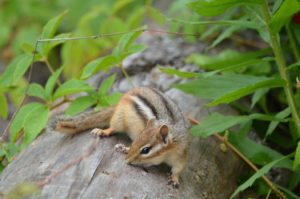
Wildlife
On silent wings: Can snowy owls survive a warming climate?
Snowy owls have evolved to survive the harsh environment of the Arctic tundra, but can they survive its warming?
- 1617 words
- 7 minutes
Kids

Unlike most owls, the Burrowing Owl nests underground.
Common name: Burrowing owl
Scientific name: Athene cunicularia[1]
Siksikáí’powahsin (Blackfoot language): maatáásiiksi; ma’taasii [2]
Type: Bird
Diet: Carnivore
Group name: Parliament
Average weight: 125 to 185 grams[1]
Average height: 19 to 25 centimetres
COSEWIC Status: Endangered
The Burrowing owl can mimic the hiss of a rattlesnake to ward off predators.
While the burrowing owl’s long, thin legs look like stilts, their elongated limbs actually help the owls sprint while they’re hunting. Burrowing owls are small, sand-coloured owls with white spots on their backs and brown spots on their chests. They have bright yellow eyes, and prominent white eyebrows. Male and female burrowing owls are similar in size, unlike most owl species where the female tends to be larger. Male burrowing owls appear lighter in colour, because they spend more time outside of the burrow during daylight hours, which results in their feathers becoming sun-bleached.
Burrowing owls are active on the ground during the day, but do most of their hunting at night. Because they spend long periods of time underground, they possess a higher tolerance for carbon dioxide compared to other birds. This is an adaptation that is common in other burrowing animals.
Burrowing owls tend to decorate their nests. They line them with materials, such as mammal dung, which is believed to help control the microclimate inside the burrow, and attract insects to eat. They also place bottle caps, foil, paper and trash around the entrance of their burrow to show other owls and predators that it’s occupied.
Burring owls mostly hunt insects and rodents, but they are known to also eat reptiles and amphibians, such as small frogs and snakes. Despite being carnivores, they will sometimes eat seeds and fruits. This flexibility in their diet is unique to burrowing owls, as no other owl has omnivore tendencies. During incubation and brooding, burrowing owls tend to stow extra food in their nests.
The burrowing owl breeds in North America during the spring and summer. In Canada, this spans Alberta, Saskatchewan and the southern interior of British Columbia, though the owl was historically been found in southwestern Manitoba, as well. During winter, northern burrowing owls migrate to Florida and many parts of South America, while owls in Central America usually stay year-round.
The owl is found in dry, open grassland with low vegetation. They build their nests in holes previously made by fossorial mammals (such as ground squirrels, badgers and foxes). However, burrowing owls are now struggling to find good nesting sites due to population declines in burrow-building mammals in their range.
When they can’t find suitable nesting sites, burrowing owls are known to nest in piles of PVC piping, buckets or other human-made materials. Some of these nesting lairs are unintentionally provided by humans, but conservationists have utilized this habit by supplying artificial burrows.
The burrowed owl is an endangered species and is protected federally under the Species At Risk Act. Land development, including the conversion of grassland into cropland as well as urban and suburban sprawl, is a main threat to the burrowing owl population in Canada. Other threats to the species include climate change, a lack of prey, vehicle collisions, and pesticide use near their nests. Pesticides are thought to negatively affect the species’ reproductive rate.
Are you passionate about Canadian geography?
You can support Canadian Geographic in 3 ways:

Wildlife
Snowy owls have evolved to survive the harsh environment of the Arctic tundra, but can they survive its warming?

Kids
Despite being Manitoba’s official bird, the great grey owl can be found in nearly every Canadian province and territory. …

Kids
The snowy owl is an iconic North American bird that is almost entirely covered by feathers to keep them warm in colder climates. …

Wildlife
By understanding why animals do what they do, we can better protect them while making people care